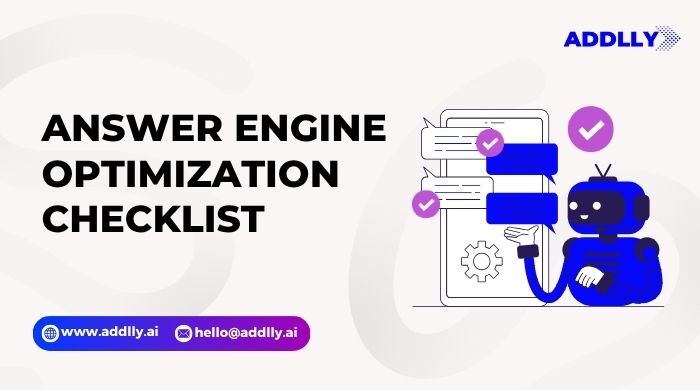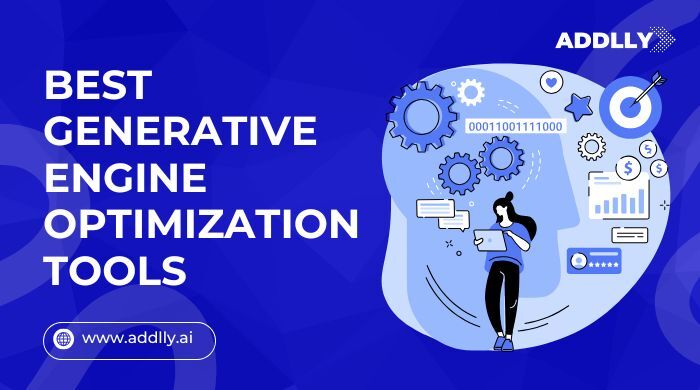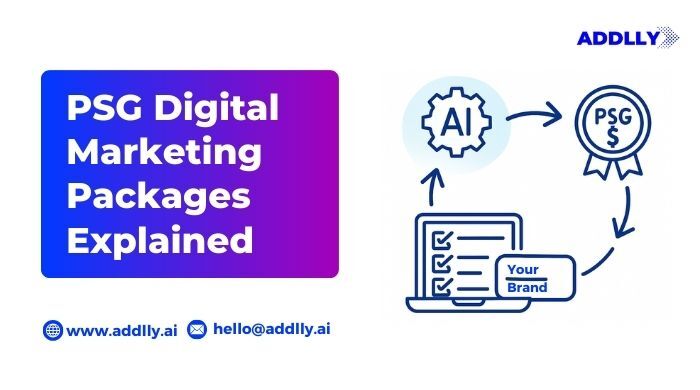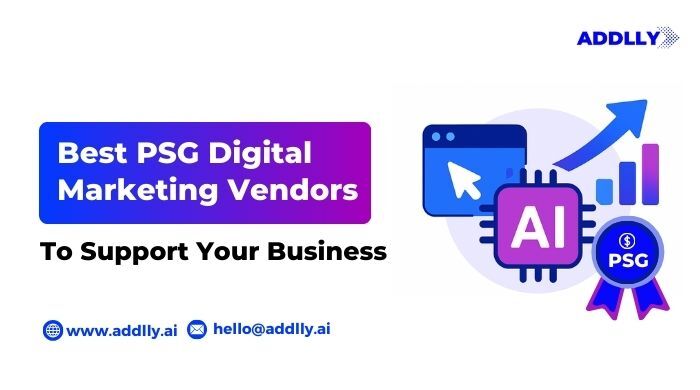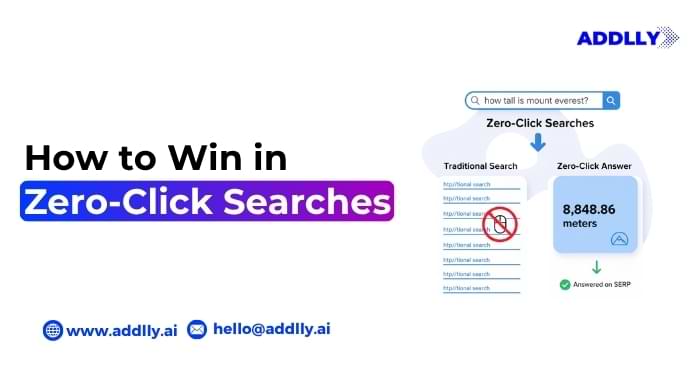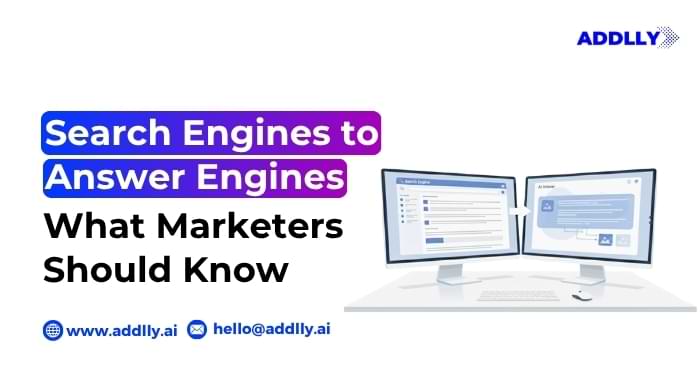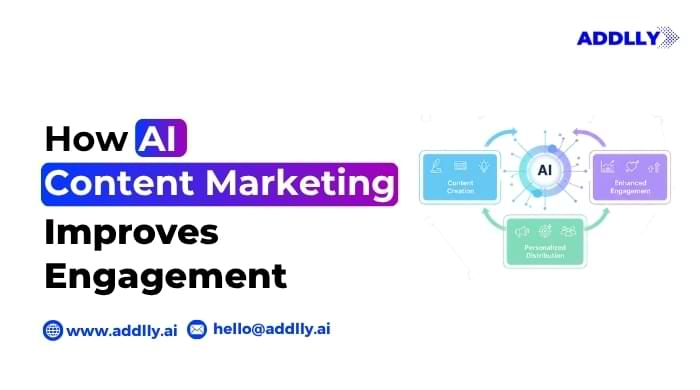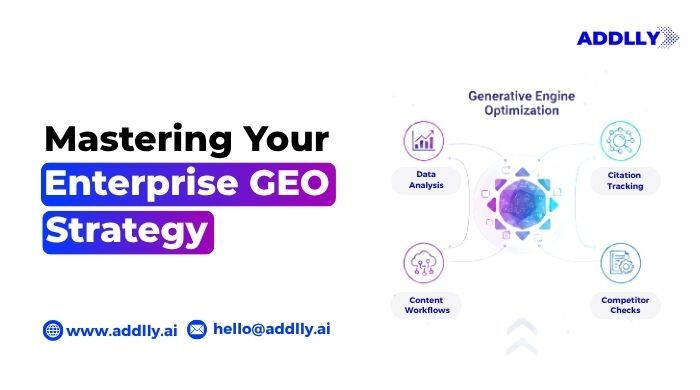Blog
Learn expert strategies and actionable tips on our blog to boost your content marketing, optimize your SEO, and enhance your social media presence with AI.
AI search engines are changing how we find information online. In 2026, the best AI search engine options are helping users go beyond traditional search engines. Instead of clicking through...
Finding the best AI agents for business in 2026 can help companies streamline their work and improve outcomes. These AI tools use natural language processing, machine learning, and other AI...
Answer Engine Optimization (AEO) is the process of getting your brand product, or service visible and represented accurately in AI-generated answers, including ChatGPT, Perplexity, or Google AI Overview. In the...
Having the list of Best AI Playgrounds which you can try 2026 can help you to explore different AI models and experiment with machine learning models. Whether you’re a developer,...
The digital world is shifting fast. You need a solid Answer Engine Optimization (AEO) Checklist 2026 to stay ahead. Users now want answers instantly. They ignore blue links and ask...
Are you ready to discover the best generative engine optimization tools to dominate search in 2026? The digital landscape is shifting fast. Traditional blue links are fading as AI search...
Learning how to optimize blog posts for AEO is vital because search is changing fast. Users want answers immediately, not just a list of blue links. Search engines like Google,...
Understanding the role of schema markup in AI search visibility is important for modern brands. Search engines have changed significantly in recent years. Schema markup acts as a translator for...
Schema markup for AEO is now the language answer engines use to understand your brand. With AI-generated answers replacing traditional search results, visibility depends on structured data, not guesswork. When...
You have likely noticed a major change in Google results recently. You type a question, and you see Reddit answers in the search results. Reddit threads now often appear above...
AI tools for improving brand visibility have become essential for businesses competing in 2026’s AI-driven search landscape, offering comprehensive solutions for tracking, optimization, and content creation that ensure brands remain...
For more than two decades, digital visibility has been defined by traditional SEO. Marketers built strategies around Google rankings, backlinks, and featured snippets, measuring success by click-through rates and keyword...
Auditing your website AI search visibility requires a systematic evaluation of how well your content performs across AI-powered search platforms like ChatGPT, Perplexity, and Claude. This process identifies technical barriers,...
Search has entered a new era. Traditional search engines like Google have long relied on algorithms that reward keyword optimization, backlinks, and technical SEO tactics. But with the rise of...
Generative Engine Optimization focuses on optimizing for AI search engines and AI-driven platforms rather than traditional search engines alone. Instead of ranking pages in search engine results pages (SERPs), GEO...
If you run a Singapore SME, you probably do not have a big marketing team, a large media budget, or time to brief agencies every week. At the same time,...
If you run a Singapore SME, you’ve probably heard about the Productivity Solutions Grant (PSG). Many owners know it can cut costs, yet feel unsure about the steps, the portal,...
If you run a small or medium business in Singapore, you have likely heard someone mention “PSG digital marketing” or asked yourself, what is a PSG digital marketing grant and...
If your business is exploring the Productivity Solutions Grant (PSG) to improve digital marketing, finding the right pre-approved vendor is usually the hardest part. The PSG grant is straightforward, but...
Many marketers still believe a long list of myths about AEO, thinking it’s just another name for SEO. In truth, Answer Engine Optimization reshapes how brands appear inside AI search...
Brand storytelling has always shaped how customers understand a brand, but the rise of AI search has changed how these stories are found, interpreted, and shared. Search engines now read,...
If you want to learn how to win in zero-click searches, you are already thinking ahead. The search landscape in 2026 is changing fast. Google and other search engines now...
If you’ve noticed a steady decline in your website’s organic traffic, you’re not alone. The shift from search engines to answer engines or AI-powered search engines is changing how people...
Have you glimpsed how marketing teams no longer rely on guesswork to create content? They look at patterns, audience signals, and real-time insights shaped by artificial intelligence. This shift has...
Have you noticed how people no longer type keywords the way they used to? They ask full questions. They use natural language. They expect instant answers for their quesries to...
An Enterprise GEO strategy brings order to a noisy digital marketing landscape. Traditional search engines still matter, yet AI powered search experiences now influence what people read and trust. Google...
The future of GEO for eCommerce is here, and it’s driven by AI-powered answer engines like ChatGPT and Google AI Overviews, which provide direct, specific product recommendations instead of just...
In today’s competitive digital space, knowing how you can integrate AI agents into your marketing workflow can change how your business grows. AI agents in marketing use data, automation, and...
AI visibility is now the deciding factor between brands that get discovered and brands that quietly disappear. Are you sure your business is showing up where customers are actually searching?...
AI search results are rewriting the rules of digital visibility. As platforms like Google AI Overviews, ChatGPT, and Perplexity become the gateways to information, some brands consistently rise to the...





